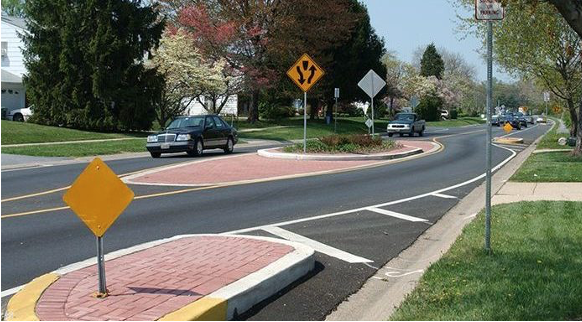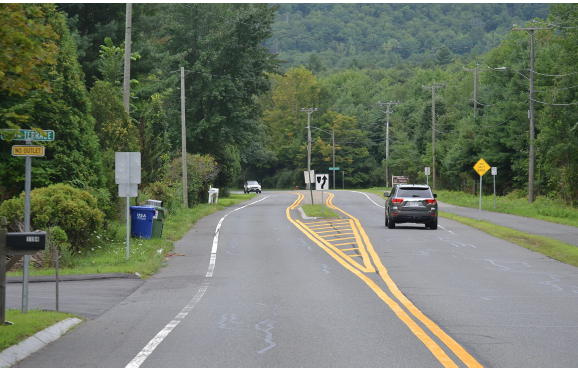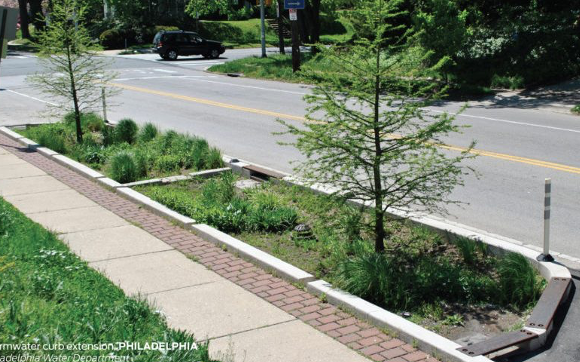By shifting the horizontal cross-section of a roadway, measures such as median islands, chicanes, and curb extensions are physical features designed to slow traffic and enable safe roadway access.
Features
| Chicanes & lateral shifts | Median islands | Curb extensions (bulb-outs) |
|---|---|---|
| A series of curb extensions that alternate from one side of the street to the other, forming S-shaped curves that essentially narrow the roadway width and create an effect that slows down traffic. | These roadway elements provide physical separation between opposing vehicle lanes, and narrow roadways to reduce vehicle speed. | For added pedestrian safety, these configurations prevent motorists from parking within or too close to a crosswalk, or from blocking a curb ramp. |
Costs & considerations
| Feature | Estimated cost | Percent speed reduction |
|---|---|---|
| Landscaped chicanes | Asphalt street: $10,000 Concrete street: $16,000 | 10-29% |
| Curb extensions | $2,000 to $20,000 per corner, depending on design and site conditions. | 3-12% |
*Note: Estimates are based on past projects and commonly used materials, and may vary depending on roadway condition, location, time, and other factors. The speed reduction percentages were sourced from FHWA's Engineering Speed Management Countermeasures Table linked in the resources below.
Potential speed benefits
Horizontal countermeasures have been found to effectively reduce the speed most people drive on a road. In one analysis, chicanes were found to reduce the 85th percentile speed by 16 percent on urban roads and 29 percent on other roads. (FHWA Speed Management Toolkit: Table 4)
These measures can also offer additional safety benefits, such as reducing cut-through traffic and shortening crossing distance for pedestrians, without significantly impacting access for emergency response vehicles as some vertical countermeasures may do (such as speed humps). In one city, converting four general travel lanes to two—and adding a turn-lane—was found to have prevented 525 crashes on three streets (BikePortland).
Visit the FHWA table on potential speed reduction for more information. While this data is all collected under differing circumstances and in different environments (volume of vehicles, rural vs. urban areas, etc.), it is still a helpful gauge for what each countermeasure can do.
Learn more about horizontal countermeasures
When considering horizontal countermeasures, it is important to keep in mind the MassDOT Project Development Guidelines (Chapter 16). These are very specific design policies and standards you'll need to adhere to, so that any changes you make meet federal and state guidelines.
For example:
- When installing chicanes, you'll need to maintain enough width to allow emergency vehicles and trucks to pass through.
- When using low cost, interim material to build curb extensions, you’ll need ensure adequate demarcation from the existing roadway using temporary curb, bollards, planters or striping.
Many of these details are included in Chapter 16 of our guide.
You can find more information about Horizontal countermeasures in these resources:
Additional Resources
-
Open PDF file, 234.56 KB, Speed Management Cut Sheets - Centerline hardening (English, PDF 234.56 KB)


